St. Pete-Clearwater International Airport (PIE)
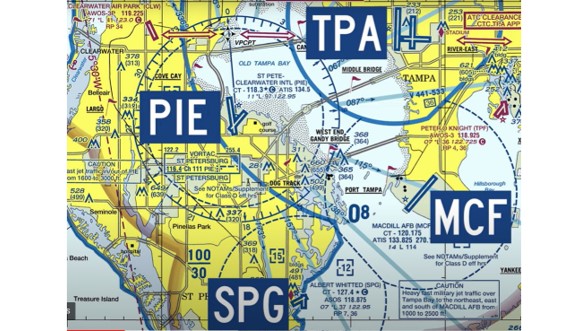 St Pete/Clearwater International Airport (PIE) is a medium sized multi-use airport located in Clearwater FL just north of St. Petersburg. The airport is situated 9 miles southwest of Tampa International Airport (TPA), 9 miles northwest of MacDill Air Force Base (MCF), and 9 miles north/northwest from Albert Whited Airport (SPG).
St Pete/Clearwater International Airport (PIE) is a medium sized multi-use airport located in Clearwater FL just north of St. Petersburg. The airport is situated 9 miles southwest of Tampa International Airport (TPA), 9 miles northwest of MacDill Air Force Base (MCF), and 9 miles north/northwest from Albert Whited Airport (SPG).
View a printable Pilot Handbook of the PIE information found on this Web page.
Know Before You Go
-
PIE traffic mix ranges from civil and military aviation, flight training operations, air carriers, and a law-enforcement aviation unit.
-
The airport consists of two intersecting RWYS – RWY 4/22 and RWY 18/36. The TWY system provides access to all services and facilities located predominantly on the west side of the field.
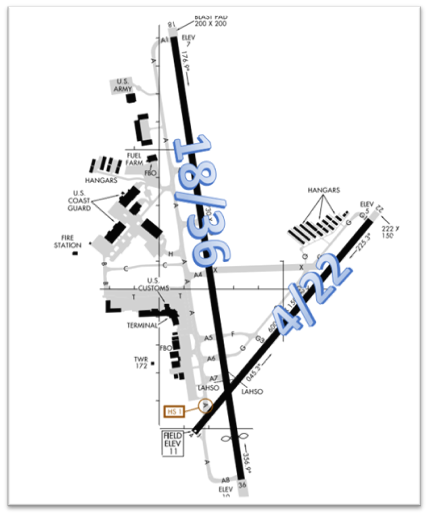
-
The airspace at PIE is Class D and underlies Tampa (TPA) Class B Airspace. The Class D ceiling at PIE changes depending upon its location beneath TPA Class B. (Refer to Sectional Chart.)
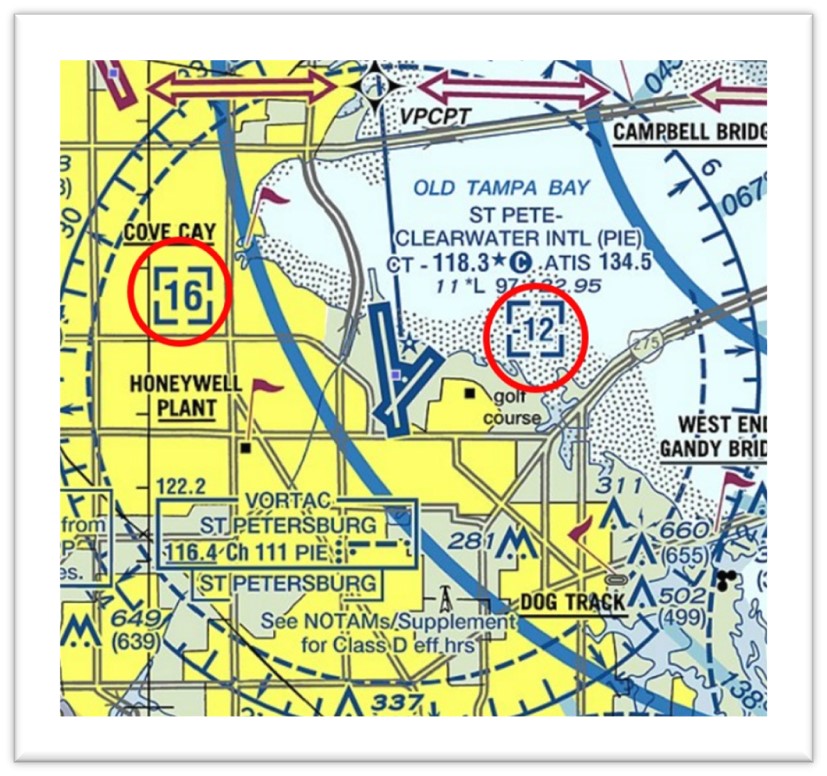
Below find various PIE-specific information and things to be aware of, as well as general information to inform your preflight planning. This will be reviewed quarterly and updated as needed. This information is to supplement the From the Flight Deck Videos that are produced by the FAA Runway Safety Group. Here you will also find information provided by the local air traffic controllers at the airport where you intend to fly. The information is subject to change. Not for navigation or legal* pre-flight action. Always refer to official pre-flight materials such as, but not limited to, NOTAMs, airport diagrams, VFR charts and airport construction notices for the latest airport-specific details.
PIE Tower Hours of Operation - 0600L to 2300L
Administrative Office Open 0700L to 1500L – M through F
Business Phone 727-539-6867
Hot Spots
HS 1 Maintain vigilance ramp/TWY close proximity to Hold Short at RWY 4/22.
Wrong Surface Intersection Takeoffs
- Risk exists where pilots will turn in the wrong direction during Intersection Takeoffs.
- Always check the magnetic compass / Horizontal Situation Indicator (HSI) to confirm departure in the proper direction.

Wrong Surface TWY Takeoff/Landing
- Risk for a Takeoff or Landing on a TWY exists when TWYs run parallel to RWYs. Remember:
- Runway Markings are White.
- Surfaces not used for Takeoff/Landing like Taxiway Markings, Chevrons, Runway Shoulder, and Runway Turn-on Markings, etc., are Yellow.
Wrong Surface Landing
- When landing north on either RWY 36 or RWY 4, ensure alignment for the correct RWY.
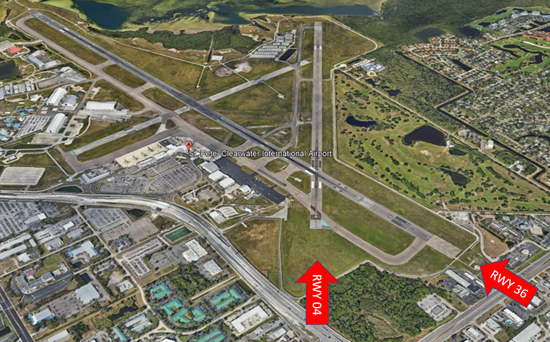
Surface Risk – Movement Area Cautions
- Hot Spot (HS) 1 is illustrated below.
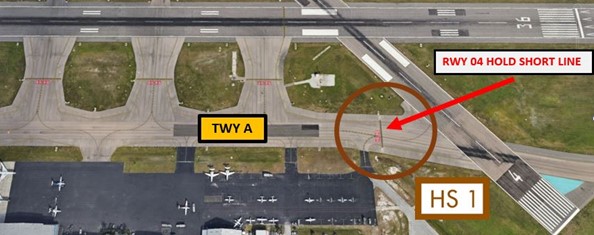
- HS 1 was added after numerous aircraft, southbound on TWY A, missed the turn onto their assigned intersection departure TWY, and continued south on TWY A, eventually crossing the Hold Short Line for RWY 4/22.
- Ask GND if unsure about which way to turn when exiting the south FBO ramp.
Additional Cautions
- The airport’s geographic location leads to bird activity in the vicinity of the airport all year round.
- Bird activity can also be found approximately two miles south of the airport over the Pinellas County Solid Waste Disposal Complex.
- When arriving from the N/NW, aircraft operating at Clearwater Air Park (CLW) is non-towered.
- Land and Hold-Short Operations on Landing RWY 18 and RWY 22
- Noise sensitive area 5 miles north extending 1 mile east and west of Localizer to shoreline.
- Turbojets landing RWY 18 and Departing RWY 36 use published noise abatement procedures.
- Lights on highway north of airport may be mistaken for runway lights.
General
- The issuance of RWY crossing instructions as well as Land and Hold Short Operations are very common at KPIE.
Traffic Patterns
- When possible, pattern work will be conducted on RWY 4/22.
- Please maintain a normal standard traffic pattern in accordance with the AIM and the FAA Airplane Flying Handbook unless otherwise approved or directed by the controller.
- Please request all early turns and non-standard traffic patterns from the controller.
Runway Crossings
- Please read back all hold short instructions with your callsign in the same transmission.
Takeoff/Departure
- Although the Terminal Ramp is uncontrolled, all aircraft must contact Ground Control for pushback clearance as you will be pushing back onto active taxiways.
- When PIE is departing to the north, expect intersection departures from RWY 36 at TWYs A6, A7 or G intersections.
- Distance remaining from RWY 36 at TWY A7 intersection 7,450 feet.
- Distance remaining from RWY 36 at TWYs A6 and G intersections 7,000 feet.
- BEWARE of Hot Spot 1. If you miss your assigned departure intersection, you may end up crossing RWY 4 without proper clearance.
- If you require a full-length departure, please advise Ground Control as soon as possible. Large aircraft (A320s, C130s, etc.) will be assigned RWY 36 full length.
- When RWY 4 and RWY 36 are in use, pattern work aircraft and aircraft transitioning thru or landing at SPG or MCF can expect departure from RWY 4. All others expect RWY 36 as stated above.
- When PIE is departing to the south, expect full length departures from RWY 18. When RWYs 18 and 22 are in use, expect full length departures from RWY 18 or 22 according to your aircraft type and or location on the field.
- Pattern work aircraft can expect initial full-length departures from RWYs 18 or 22 according to your location on the field or traffic volume. After departure, pattern work will be conducted on RWY 22.
Noise Abatement
- IFR Noise abatement procedures (BAYPO RNAV DP, ENDED RNAV DP and ST. PETE DP) will be used for turbojet aircraft weighing more than 60,000 lbs. only. If unable RNAV departure ATC will assign the ST. PETE departure procedure.
- All other IFR turbojet aircraft weighing 60,000 lbs. or less will be assigned the LLRGORNAV departure procedure or radar vectors if unable RNAV departure.
- All other IFR departures and VFR aircraft requesting Class B Service will be assigned radar vectors.
- When KPIE is conducting visual approaches to the south, all participating airlines can expect the RNAV Visual Approach RWY 18 for aircraft weighing more than 60,000 lbs. Non-participating turbojet aircraft weighing more than 60,000 lbs. can expect the North Bay Visual Approach RWY 18 during daytime hours or the VOR-B during nighttime hours.
Arrival/Landing
- TPA Approach will normally sequence all IFR aircraft to RWY 18/36. PIE ATCT may change this RWY assignment and/or sequence due to VFR traffic in the PIE class D, normally upon initial contact.
Additional Cautions
- Use extreme caution when turning base outside of the PIE Class D airspace for RWY 18/36. Numerous VFR aircraft not in communications with ATC can be found in Class E and Class G areas northwest, southwest, and south of the PIE Class D airspace.
Special Traffic (Military / Commercial / Helicopter, etc.)
- The airport serves a considerable number of military aircraft, part 121, and part 135 operators. St. Pete/Clearwater is home to USCG Air Station Clearwater and US Army Reserve Aviation as well as numerous flight schools.
- Flight training makes for a great portion of daily operations at PIE.
